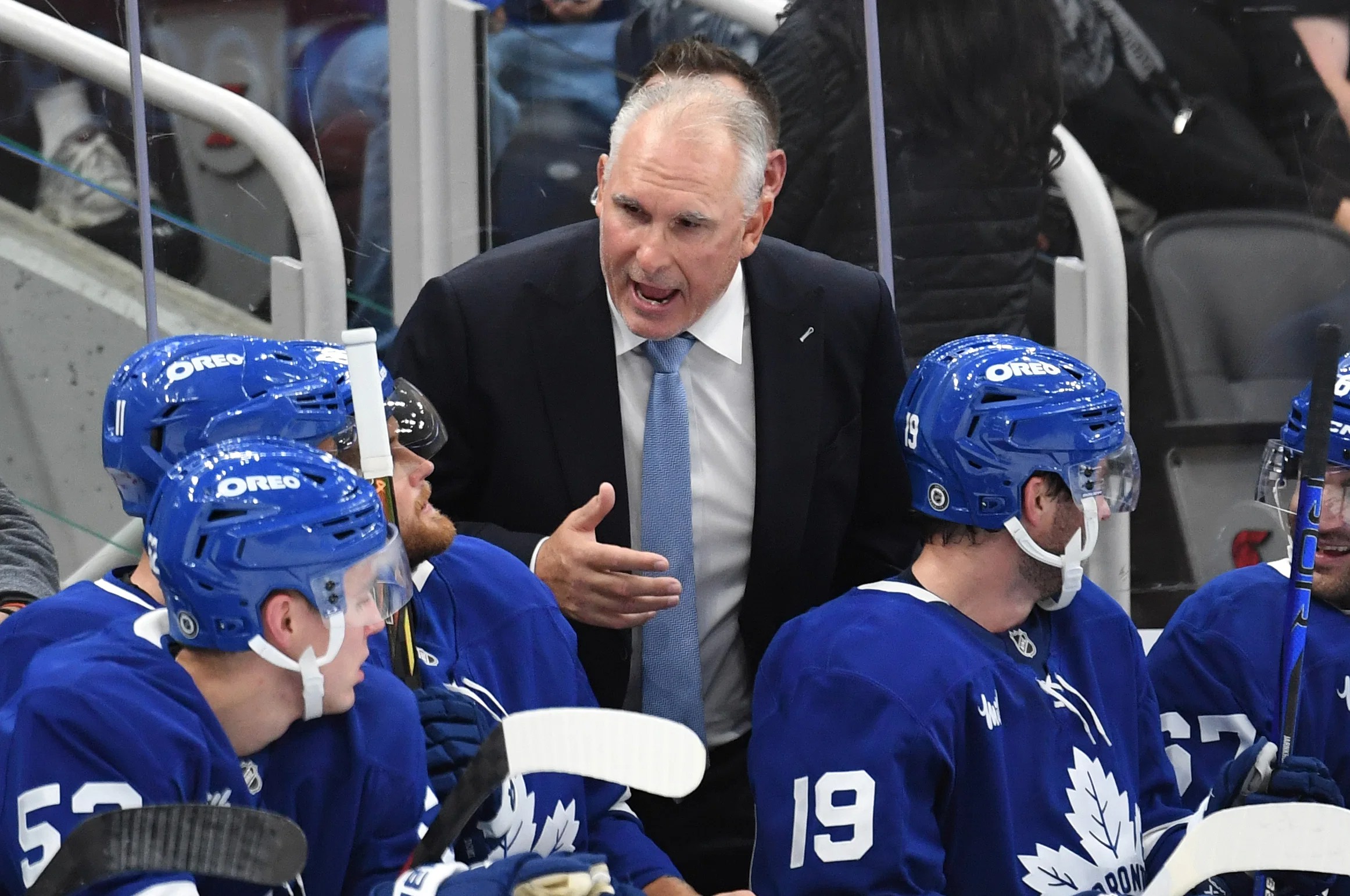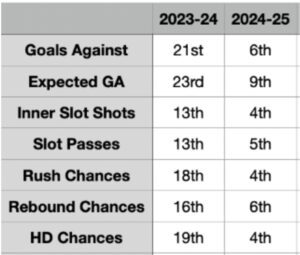Last week over at Sportsnet, Justin Bourne wrote a thoughtful article entitled, “Maple Leafs have succeeded at playing low-event hockey, but should that be their goal?”
Bourne discusses the Leafs’ defensive improvements but points out that they have somewhat robbed Peter to pay Paul in the process, becoming notably worse offensively. The premise of worsening offensively while improving defensively – even though this team has traditionally struggled to score at playoff time – is worth discussing further.
I don’t want to copy and paste Bourne’s whole article, but he pulls a few stats worth flagging. I imagine that some of the numbers below are starting to crater as Auston Matthews continues to miss games, but in the big picture, they are more indicative of what to expect from this team when healthy. This chart shows their early defensive improvements, and it is eye-popping:
We expect improvement in total goals against based on goaltending alone. Anthony Stolarz has been a massive improvement on Ilya Samsonov to this point (and Samsonov is struggling so far this season), but it’s clearly not as simple as Stolarz playing out of his mind. The Leafs are creating a safe environment around their goalies. They are clamping down on teams in every which way – off the rush, off the cycle, and in the high-danger areas.
That is partly the result of improved defensive personnel. Chris Tanev is a huge upgrade – one of the best defensive defensemen in the league, and by nature of his right shot, he pairs perfectly with the Leafs’ other best shutdown defenseman, Jake McCabe. In previous years, McCabe and TJ Brodie, both left-handed, never quite meshed properly. Now, the Leafs have the making of a top-flight shutdown pairing, and that is significant.
Oliver Ekman-Larsson and Conor Timmins are quality puck movers who have not been defensive liabilities so far. They aren’t asking Morgan Rielly to do nearly as much; he is on track to play his lowest time on ice per game since his second season in the league. It’s a deeper and more versatile unit.
But the defensive uptick is the byproduct of the style the Leafs are coached to play, too. This is a particularly important statistic that Bourne flagged:
“At five-on-five, the Leafs dump it in on 58.8 per cent of their zone entries, a rate exceeded by only three teams in the league (one of those is Florida, whose personnel is arguably better suited for it). Last season, they were closer to 52 per cent, a much more middle-of-the-pack average.”
The Leafs are giving up less defensively partly because they are playing more conservatively offensively. Their game has far less risk, which creates fewer opportunities for teams to sit back, wait for turnovers, and counterattack – a tactic higher-end teams frequently deployed against them last season and beyond.
As Sheldon Keefe said, “When teams play the Leafs, they set up the game for the Leafs to beat themselves.”
Sheldon Keefe vs. Craig Berube hockey
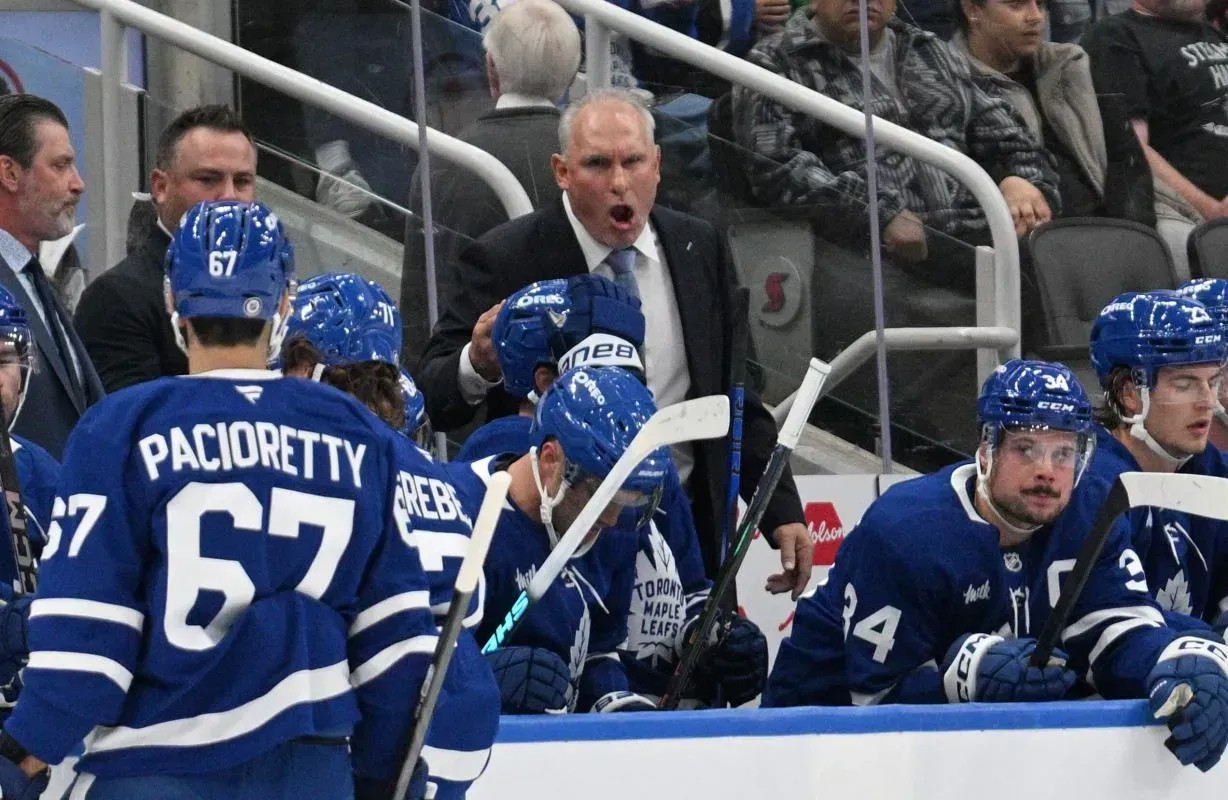
A big reason why the opposition approached games against the Leafs this way, though, was because Keefe enabled his team to attack offensively. They were very good off the rush and generated a ton of offense that way. They’d send forwards to the far blue line for stretch passes. They’d encourage players to make a play at the blue line. They wanted to create offense through the neutral zone.
Keefe’s new team, the Devils, are currently eighth in goals per game and five-on-five goals as of this writing. He encourages his skilled players to use their talent, and generally speaking, it will work (in the regular season). It did with the Leafs, and it already is with the Devils.
Berube does not want to play that way, and it’s fair to wonder if he is overcorrecting to some degree by forcing the Leafs to buckle down defensively. They’ve been shut out twice already after a 252-game run without a clean sheet against, which is, at least, eyebrow-raising. However, I’d argue it makes more sense to build the defensive foundation and grind away at the offense rather than the inverse scenario.
This is essentially what the Leafs did last season. Look at their first two games for the early evidence: a 6-5 barn burner against Montreal, followed by a 7-4 victory against Minnesota. Matthews scored hat tricks in both games. At this juncture last season, in addition to those games mentioned above, I’d bunch together a 6-4 loss to Buffalo, a 6-5 win against Tampa Bay, a 6-3 loss against Ottawa, and a 5-4 win against Calgary in the category of “loose” hockey. That’s six of their first 15 games.
By the end of December last season, I wrote a piece looking at what was essentially a lottery-level defense from the Leafs. It’s worth the click to review the chart, which shows their defensive rankings in all the key indicators. It was a mess, although to their credit, they cleaned it up defensively and their goaltending improved as the season went along. By playoff time, they were playing grind-it-out, forechecking, defensive hockey.
The biggest issue with that progression: If this was the plan all along, why didn’t they do it from the start? They went from a lights-out offense to really bad defensively to needing to fix it and grind it out (they were also aided by a power play that clicked at a ridiculous 50 percent over a full month). The concern isn’t the choice of direction so much as not building towards it from day one.
This brings to mind when Paul Maurice took over behind the Panthers’ bench. As they famously went from President’s Trophy Winner to final wildcard berth, to Stanley Cup Finals, to Stanley Cup Champions, Maurice provided this attention-grabbing quote – the first part is funny, but the second part is particularly interesting:
“I showed up here and they had 122 points. I managed to get them down to 92 in one year. Brilliance. So, there was no rebuild here. It was the style of game that I think, they knew they could play. They believed in the style, grabbed hold of it. By January of my first year here, we’ve been a really good team.”
The Panthers were, of course, helped by the Matthew Tkachuk trade. It was a franchise-changing move. But they also changed how they played, becoming an elite forechecking team that played physically and crashed the net. That change doesn’t happen overnight; in Maurice’s estimation, it took roughly half the season for the Panthers to get there.
Berube is working on the same process. As Bourne noted, the 2024-25 Leafs are approaching a Panthers level of dump-in and go-get-it.
The old way didn’t work
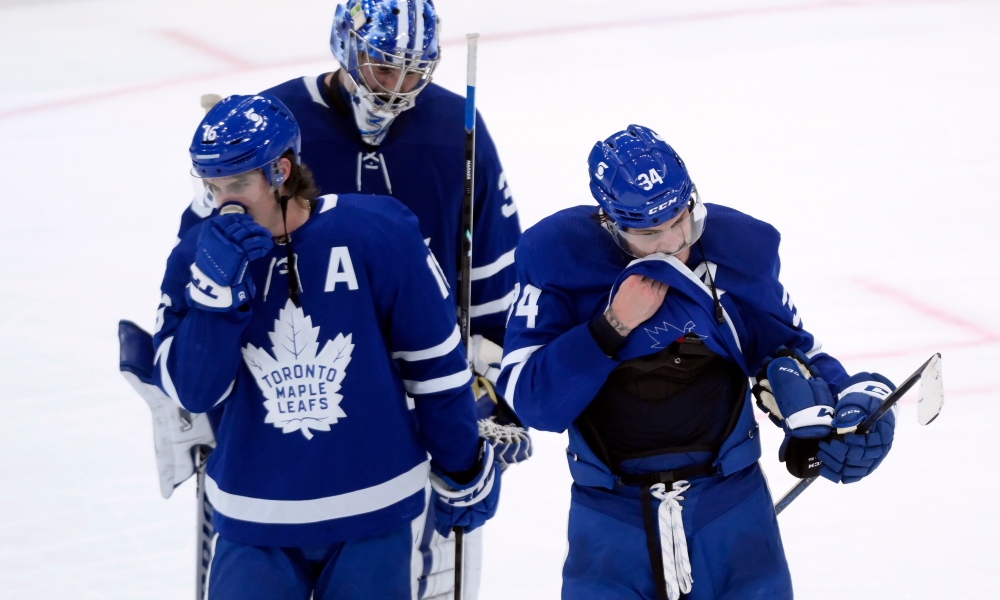
Now, I have no idea if the new approach will work out, but we have very clearly exhausted the premise of the Leafs running “two first lines” that overwhelm the opposition offensively and light them up in the playoffs. This simply hasn’t come to fruition – not even close.
There has been no Nathan MacKinnon- or Connor McDavid-type performance where the Leafs blow a team out of the water as their elite players outperform any roster deficiencies. Goalies of all kinds have looked like stars against the Leafs in the playoffs. The Leafs haven’t even sniffed a conference finals appearance, let alone a Cup final.
At this point, we know that the stars will not overcome any defensive obstacles and find a way to produce big numbers. They’ve been shut down year after year. They have been the best five-on-five goal-scoring team in the regular season for over four years now, but it has not translated into the playoffs. Their two options are to make drastic roster changes (which they haven’t done) or to try something completely different with their style of play.
For what it’s worth, Berube’s process is valid based on recent playoff history. They are playing a style very similar to several recent Cup champions – namely, Florida, Vegas, and Berube’s own Blues team. So far, the Leafs’ star players haven’t produced Kucherov or MacKinnon-like performances – the other Cup champions over this time period – to make us believe it’s the route or style of play they should emulate (to say nothing of not exactly having a Victor Hedman or Cale Makar on the roster).
Florida was 11th in goals per game and tied for first in goals against per game when they won the Cup. The season before, Vegas was 14th in goals per game and 11th in goals against per game (Adin Hill got hot in the playoffs, but they were always excellent defensively). When the Blues won, they were 15th in goals for and fifth in goals against.
However, the point about the offense dying up is noteworthy. Logically, how will scoring less in the regular season help them score more at playoff time? The Leafs have scored more than two goals in a playoff game just once in their past 14 games, which is truly a riddle wrapped in a mystery inside an enigma.
I’d shift the framing slightly by suggesting it’s about excelling defensively, first and foremost, and learning how to generate offense while being excellent defensively. It is very difficult to do both simultaneously, but they have to create consistent offense inside an environment where they maintain their excellent defensive play – not loosen up their defensive play to create more offense.
Changes to their puck management are forcing the Leafs to generate offense in a different manner – one that hopefully translates into the playoffs. The areas the team is working on now are the areas we often complain about every spring: They didn’t get inside enough, they didn’t make the goalie’s life difficult, the odd man rushes dried up, and they couldn’t create.
The Bruins left the Leafs’ points open to an almost embarrassing level last season (about as severe as it gets for the NHL level). The Bruins dared the Leafs to make them pay, but Toronto didn’t have the talent on defense to do it.
Berube’s ongoing process, with an eye toward the spring
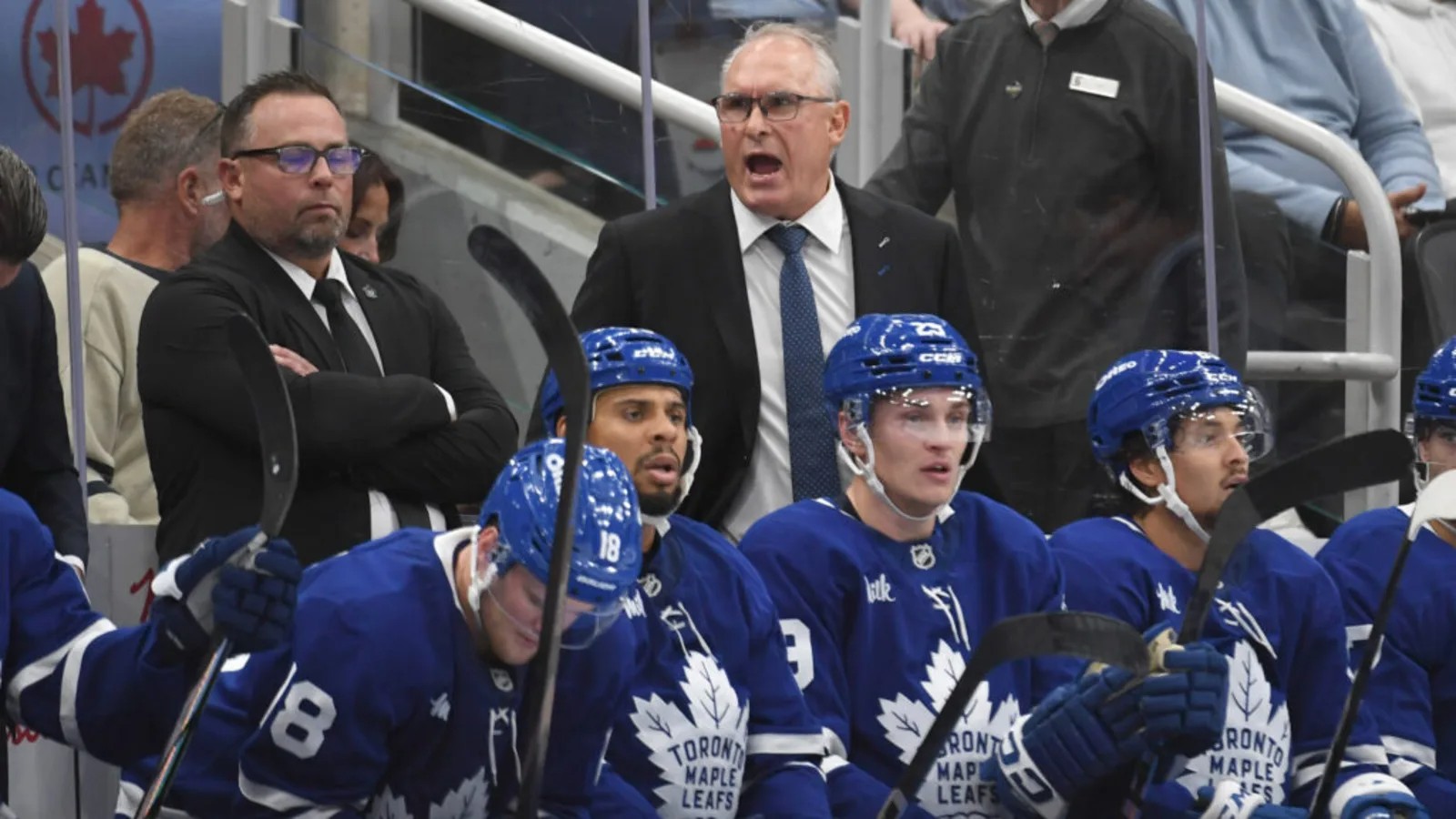
At least now we know what the Leafs are seeking to accomplish consistently, and they are building it from the back end out. If the coaching staff manages to get the team to a point where it can out-grind the opposition defensively, how will opponents game-plan them? If they open it offensively against the Leafs, good luck. The opposition’s primary path to victory at that point would be special teams.
It all starts with tight defensive play. When the Leafs were without literally half their forward group against Vegas on November 20, they clamped it down defensively at five-on-five, giving Vegas next to nothing, and essentially relied on winning the special teams battle for a tidy win. They’ve done this a lot recently as they have cobbled together makeshift lineups. The foundation is there for them to lean on defensively (and in net).
After the Leafs came back to beat Washington, Berube provided a (rare) telling quote for me:
Overall, we are really not panicking in these situations. We are playing the game. We are not trying to open the game up. We are staying with it. That is what we did tonight… We are just playing. We are not panicking. We are not thinking, ‘Oh, we have to score. We have to open it up.’ That is good because we don’t need to do that. We just have to stay with it.
The Leafs aren’t close to achieving the proper balance yet – which was Bourne’s main point, I believe – and all these injuries piling up will make it even more difficult to evaluate how the team is truly progressing with the style change. However, there are clear indicators that they are improving drastically defensively, and the normalizing power play has made them formidable offensively, even in the absence of their elite goal scorer.
Realistically, the Leafs will need to add more scoring depth regardless of the adjustment process to the new style of play. There is a depth personnel issue at play, which is just as much to blame for their offense going south overall as anything else. A lack of proper depth scoring has been a regular playoff issue, too. Brad Treliving will need to add.
But the approach to their style change is a worthwhile endeavour. Their stars have proven they can’t win the other way, and so far, with the help of their offseason changes, the Leafs have shown real progress defensively. It is making it more difficult for them to create offense, and that’s okay for now; they have a full regular season to work through it, they will presumably get healthy(er) at some point, and a productive power play, plus an eventual addition, could go a long way.
In the meantime, the Leafs don’t need to take the easy way out offensively. They need to learn how to create offense inside this new environment. If they can eventually accomplish this while maintaining their early status as a top-flight defensive team, the Leafs will be very difficult to beat in the spring.















![John Gruden after the Leafs prospects’ 4-1 win over Montreal: “[Vyacheslav Peksa] looked really comfortable in the net… We wouldn’t have won without him” John Gruden, head coach of the Toronto Marlies](https://mapleleafshotstove.com/wp-content/uploads/2025/09/gruden-post-game-sep-14-218x150.jpg)








